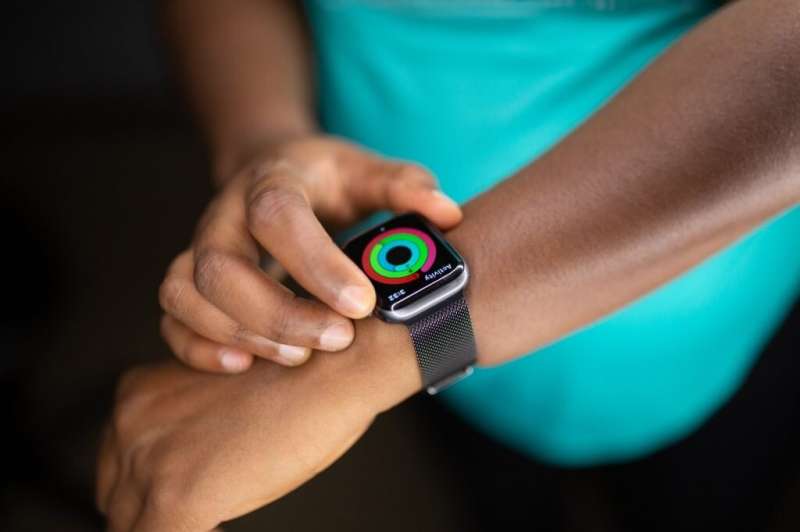This article has been reviewed according to Science X's editorial process and policies. Editors have highlighted the following attributes while ensuring the content's credibility:
fact-checked
trusted source
proofread
Study explores smartwatch potential in health care

Smartwatches could soon benefit overstretched health practitioners and their patients, says Business School researcher Ruhi Bajaj, lead author of a preliminary study exploring the potential role of such devices in health care.
Integrating smartwatch data into clinical care and electronic medical records could provide a more comprehensive view of a person's health and complement routine clinical data. This may lead to better patient or client engagement in self-care and increased health care efficiency by automating some diagnostic processes, says Ruhi.
However, concerns around the interpretation of smartwatch data analysis and the corresponding potential increase in workload are barriers to integrating smartwatch data into workflows.
As such, Ruhi's study aimed to co-design, develop and evaluate a prototype of a health monitoring tool using smartwatch data analytics to assist health care professionals with clinical decision-making. The study is published in the March 2023 edition of Future Internet.
In the first phase, Ruhi and her co-authors, Dr. Fernando Beltran and Dr. Rebecca Meiring employed a co-design approach to gain insight into the needs of eight health care providers in Auckland. A general practitioner, physiotherapist, four clinical exercise physiologists, and two physical trainers participated.
The academics explored the health care professionals' needs for an application that would allow them to monitor, interpret and make decisions based on smartwatch data.
The participants were asked for their views in several areas, including the accuracy of the data, the possible benefits and barriers to integration in a health care setting, and how they would like to view the data in a web-based app.
The researchers also asked what data the practitioners perceived as valuable, what types of irregularities they would like to see highlighted in a summary report, who should view a summary report, and whether they would like an alert feature to notify them of any abnormal event in the data.
Participants indicated that currently, heart rate was the most valuable parameter for data visualization and anomaly detection. They also indicated that they would prefer to view the summary reports as charts and bar graphs.
"Using the information gained, we developed a prototype application that used machine learning to help visualize long-term smartwatch data, detect heart-rate anomalies, and allow health care providers to communicate concerns to their clients or patients," says Ruhi.
The data of Fitbit users, collected over five months, was used to train and build a predictive machine learning model to detect irregular heartbeats based on heart rate, calories, steps, and distance data over time. A dashboard was also developed to present probable health anomalies with the possibility for health care professionals to filter out false positives.
In the study's final phase, ten healthcare providers completed a questionnaire to evaluate the prototype, and more than 60% scored it positively on usability. Overall, says Ruhi, the prototype was well-received, with some positive comments about the possible integration of smartwatch data into clinical practice.
One interesting finding, she says, came in response to the question: Who should view the summary reports and interpret the results of machine learning algorithm for further actions?
"As we thought, there were concerns about workload increases, and some of the health care professionals indicated that they would like a new position created, a role in which the person would have the technical skills and medical knowledge to sit between the health care providers and patients or clients, and who could review the results and notify the doctor when medical intervention is required."
Ruhi was motivated to undertake the research project after witnessing the health care industry's struggles and thinking about the role of digital health technology and how it has the potential to help reduce workloads and support patient care.
"Wearables from Fitbit, Apple, and Samsung are commercially available, and some are not too expensive. Over time, with advancements in sensor technology, improvements in the accuracy and reliability of smartwatch data are expected to increase. Also, with the enhancements in machine learning algorithms and likely new health care roles, wearables have the potential to transform our health care models from reactive to proactive and prescriptive."
More information: Ruhi Kiran Bajaj et al, Co-Design, Development, and Evaluation of a Health Monitoring Tool Using Smartwatch Data: A Proof-of-Concept Study, Future Internet (2023). DOI: 10.3390/fi15030111





















